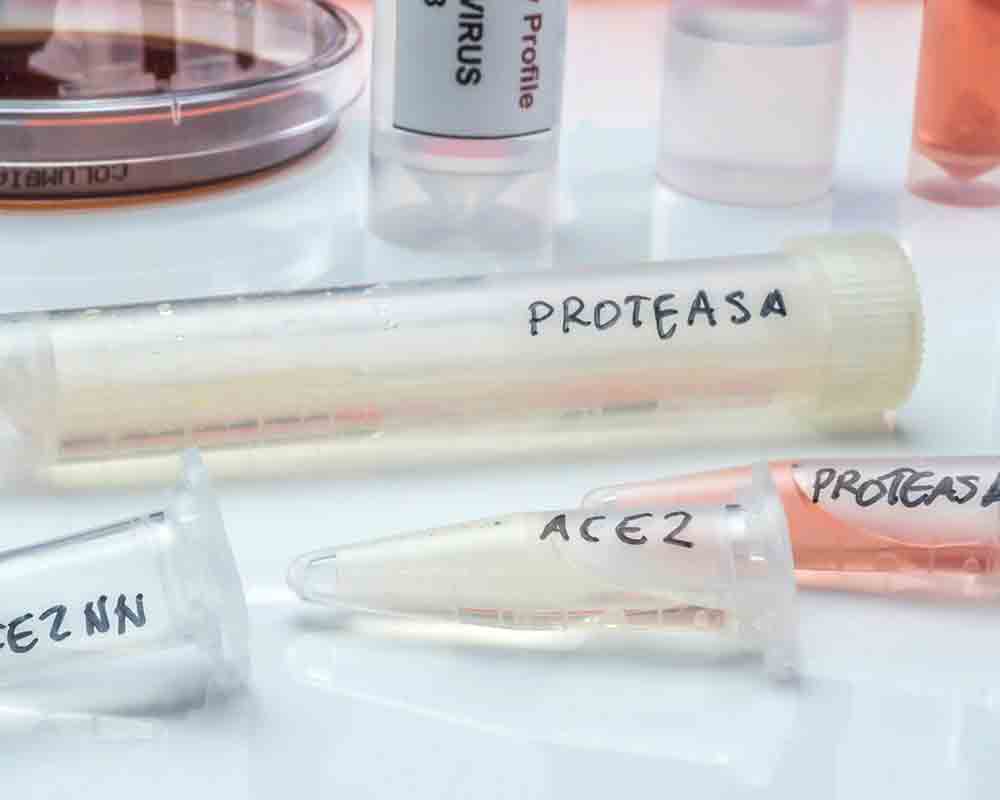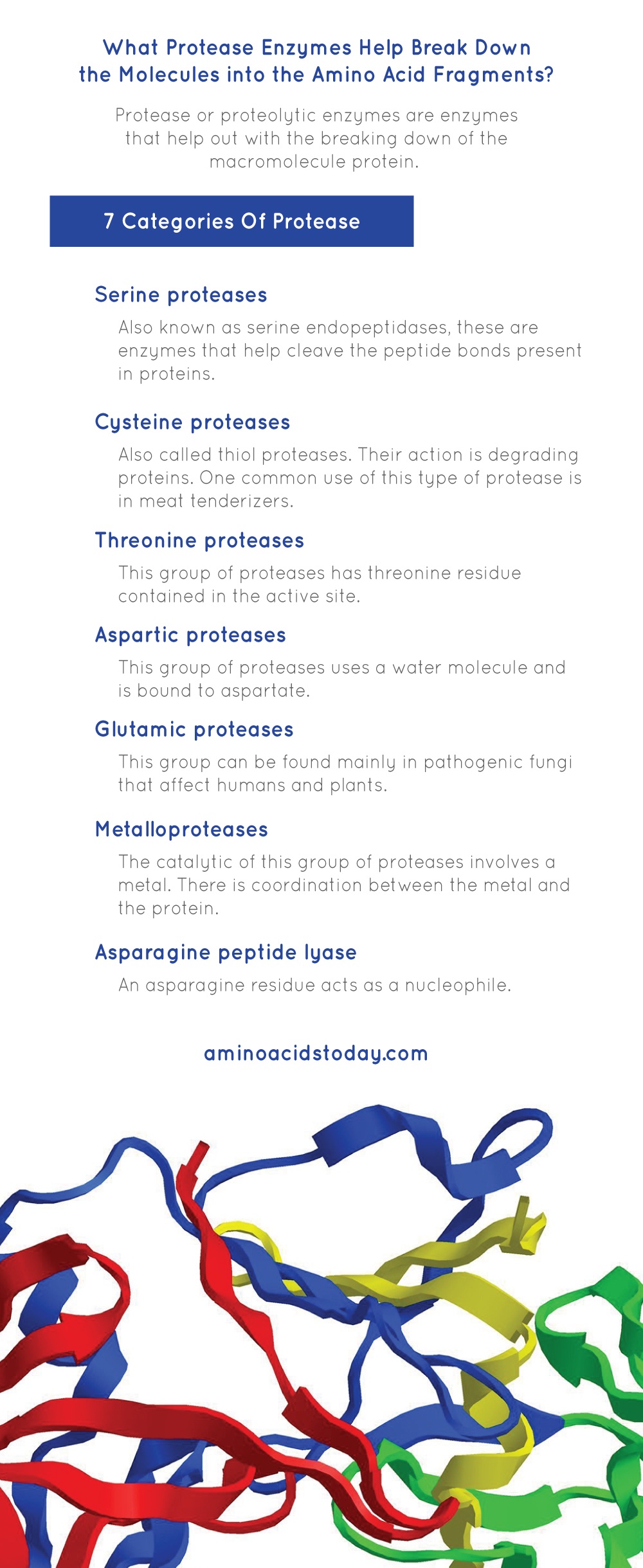
Ever heard of enzymes? Well, those guys do a whole lot more than you can imagine. Enzymes facilitate so many reactions that take place in the body. Without these enzymes, so many things would be slowed down in the body. Today we will be taking a look at protease enzymes. We will be answering the question “what protease enzymes help break down the molecules into the amino acid fragments?” Keep reading for the answer.
Protease or proteolytic enzymes are enzymes that help out with the breaking down of the macromolecule protein. These enzymes can be found in our bodies. You might not know, but some of these enzymes are found in foods as well as dietary supplements. For some time now, proteolytic enzymes found in supplements have grown in popularity. Well, for today we will be looking at how these enzymes break down protein. And also which enzymes work for which reactions. Keep scrolling for more information on that.
What are Protease Enzymes?
Protease enzymes are very essential in the body. They have important roles in the body when it comes to breaking down protein. Other names for proteases are proteolytic enzymes, proteinases, and peptidases. In our body, they are produced by two organs, the stomach, and the pancreas.
The most common of these enzymes in the digestion of protein which is taken in through diet. But that’s not all. They also have other important roles in the body such as blood clotting, protein recycling, and cell division.
You’ll be making a mistake if you assume that only humans make use of these enzymes. Plants also make use of these enzymes when it comes to their life cycle. In plants, they are quite important for plant growth and development. At the same time, they help in keeping the plant healthy by protecting against certain pests such as insects.
One interesting thing is that if humans consume proteases gotten from plants it’s quite beneficial. That’s why the supplements that contain proteases are either from plants or animals.
The proteases produced in the body are mainly for the breaking down of proteins like eggs, fish, and meat. This way, they can be digested and then properly absorbed. Proteases can also be found in foods. The two main foods that contain proteases are pineapple and papaya. The main protease enzyme in pineapple is bromelain. And in papaya it’s papain.
What Protease Enzymes Help Break Down the Molecules into the Amino Acid Fragments
Based on their catalytic residues proteases can be classified into 7 categories. Let’s take a look at each of them briefly.
- Serine proteases: They are also known as serine endopeptidases. And these are enzymes that help cleave the peptide bonds present in proteins. And in this reaction serine happens to be the molecule the donates an electron pair at the active site of the enzyme. They can be found in both eukaryotes and prokaryotes.
- Cysteine proteases: They are also called thiol proteases. Their action is degrading proteins. They have a similar mechanism of catalysis that involves cysteine donating an electron pair in either a dyad or a triad. This type of protease is found in fruits such as kiwi, papaya, fig, and pineapple. When the fruit is unripe the level of the enzyme tends to be higher. One common use of this type of protease is in meat tenderizers.
- Threonine proteases: This group of proteases has threonine residue contained in the active site. What happens is that these proteases have secondary alcohol that donates electrons. This is what causes the catalytic action.
- Aspartic proteases: This group of proteases uses water molecule this is bound to aspartate. Usually, these water molecules are activated. This causes the peptide substrates to be broken down. One thing about this group of proteases is that they are inhibited by the enzyme pepstatin.
- Glutamic proteases: Within the active site these groups of proteases have a glutamic acid residue. Before this group was assumed to belong to the aspartate protease group. This group can be found mainly in pathogenic fungi that affect humans and plants.
- Metalloproteases: The catalytic of this group of proteases involves a metal. Most of them require the use of metal zinc. But for some cobalt is needed. There is coordination between the metal and the protein. And this is done via 3 ligands.
- Asparagine peptide lyase: For this group of peptidases, the mechanism of catalysis is an asparagine residue that acts as a nucleophile. In this reaction, the elimination reaction takes place and not an elimination reaction. That’s how the peptide bond is broken down in this reaction.
How to Use Proteases
There are sure a lot of benefits that come with proteases. But how should they be used? Well, there are many ways you can use these enzymes. And it all depends on the goals that you have. If you want to follow the natural route then you can opt for foods that are rich in proteases. Such foods are kiwi, papaya, fermented foods, and pineapple.
As for the supplements make sure you get them from a good brand. You can ask around or search for some of the best brands in town. Search for their quality as well as their potency. Also before purchasing make sure you check the label well. The potency of the different enzymes should be listed on the label. There is a whole lot you can pick from. And the good thing is that there are different combinations of different enzymes.
As for the dosage and usage, you can check for that on the bottle. Make sure you are following the right dosage. Overdosing can lead to certain problems. So you have to be very careful when it comes to dosage.
We hope you have learned a lot about what protease enzymes help break down the molecules into amino acid fragments.
